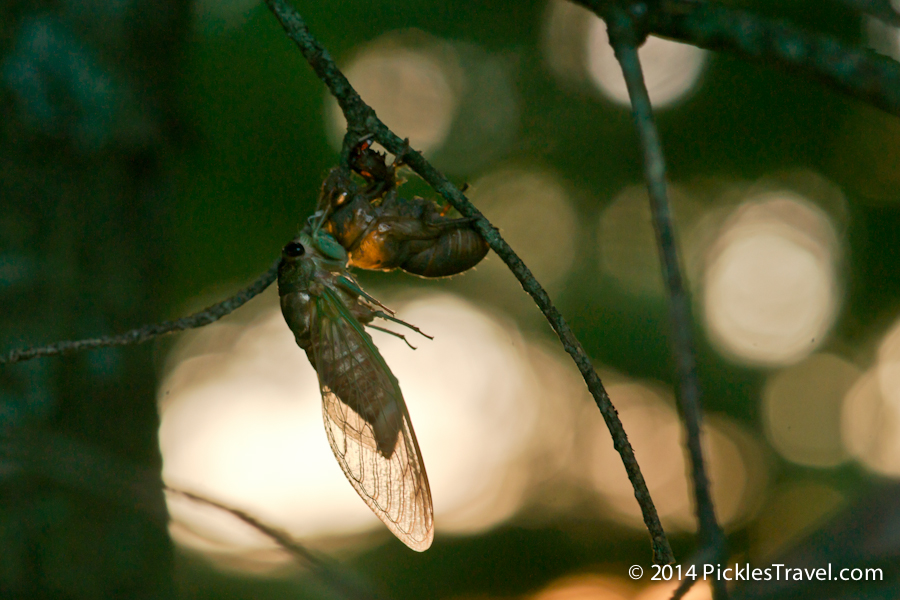
The trees are abuzz with the songs of Cicadas once again this Summer. Here is a photo essay of how they emerge from their skin to become the beautiful flying, buzzing insect that they are.
Watching a cicada molt from its larval skin is a truly remarkable sight. From seeing them move inside of their pre-historic looking shell as they find a place on a tree to grab hold and ‘affix’ themselves to seeing them break through the skin all the way to watching their wings descend.
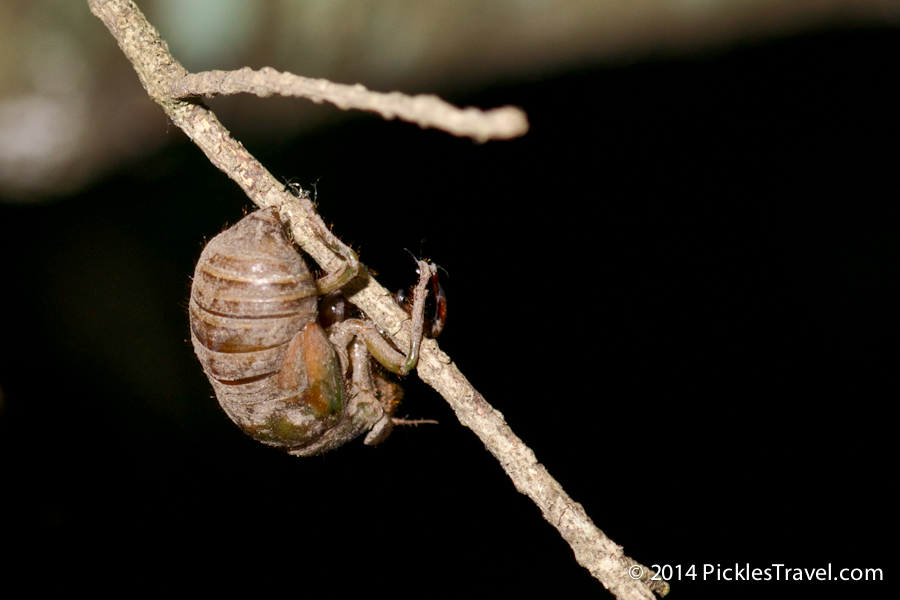
Beginning around dusk the Cicada nymph crawls out of the ground and up a tree to affix itself to a sturdy part. This nymph circled this branch, feeling for a strong hold. Molting is quite a process and they’ll be there awhile, so they want to make sure not to fall during the process.
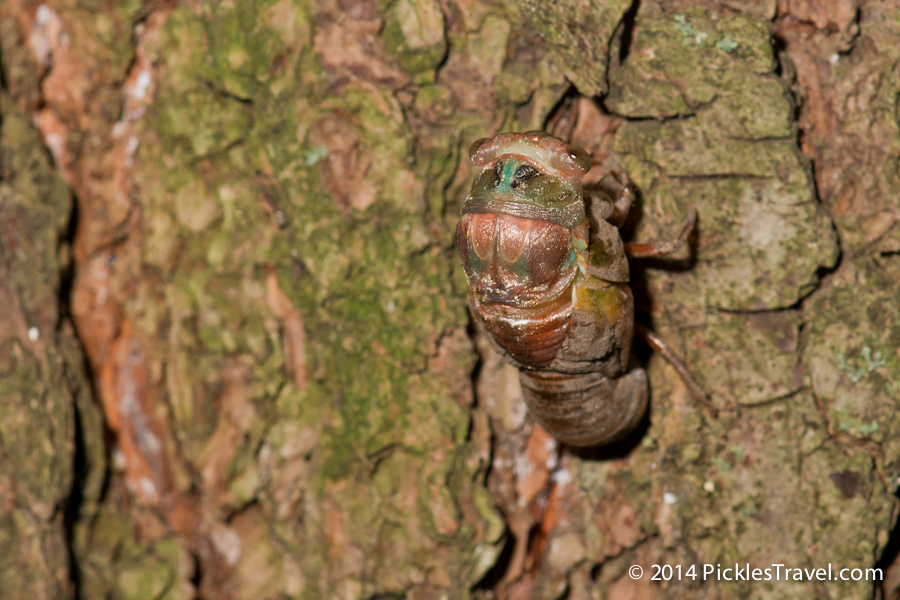
The Cicada begins to emerge, or molt, from the nymph skin- slowing emerging with it’s dorsal side pushing out first.
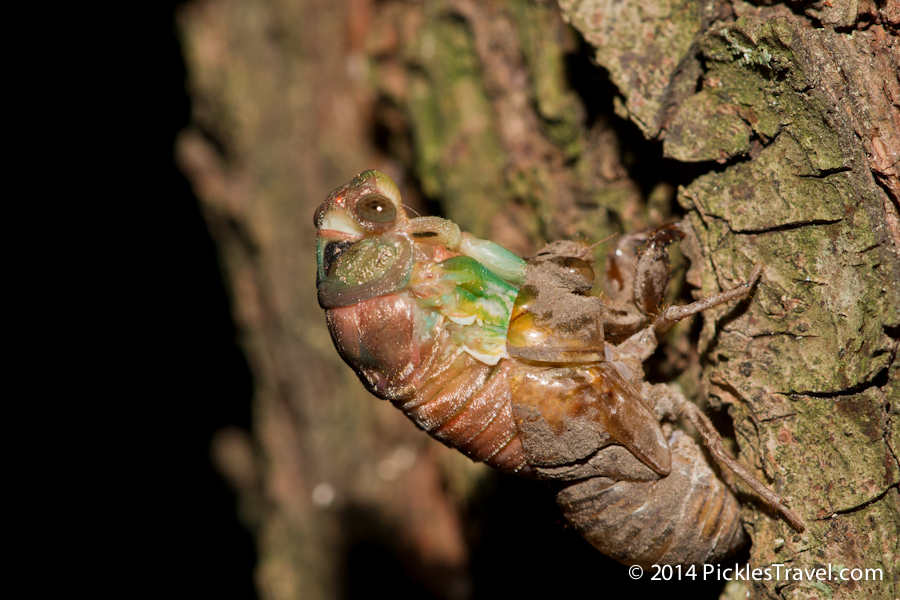
The cicada quickly molts from the skin. Notice the fresh dirt that is still stuck to the side of the nymph skin.
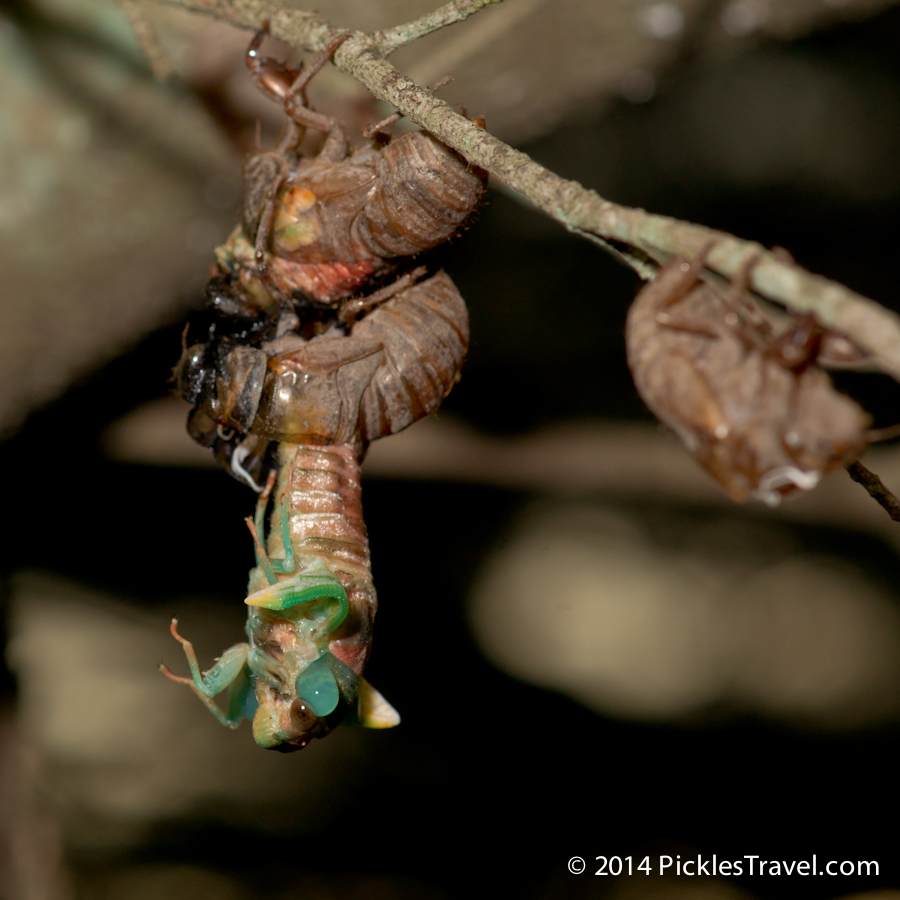
Here a cicada attached itself to another cicada nymph who was about to emerge.
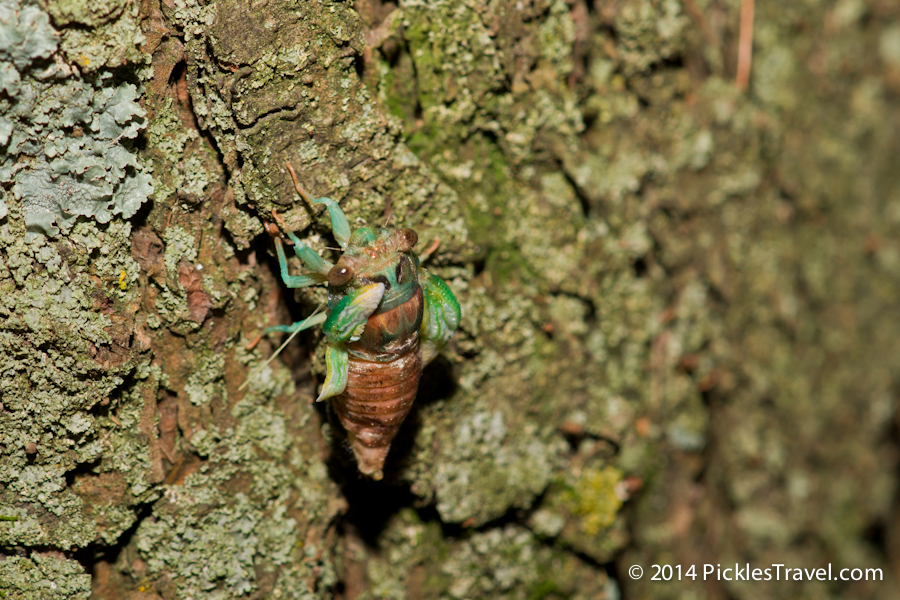
Once they molt from the skin they still can’t fly. It takes another several minutes for the wings to descend.
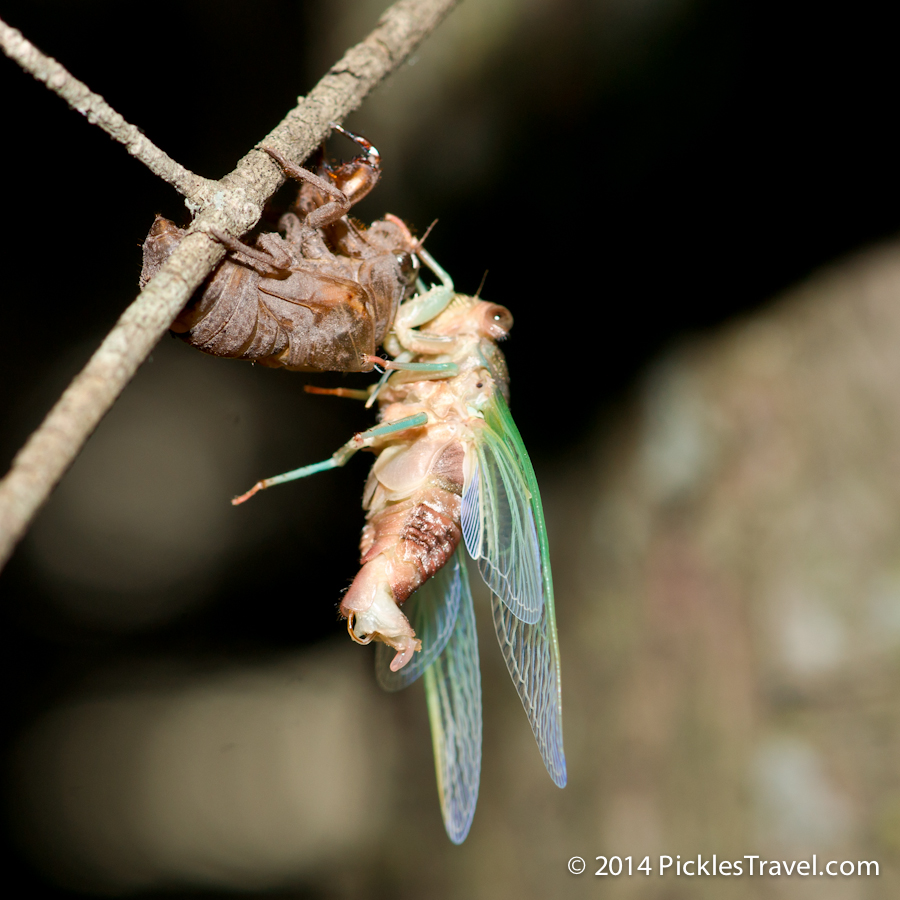
Cicada wings are beautiful. An array of detailed patterns.
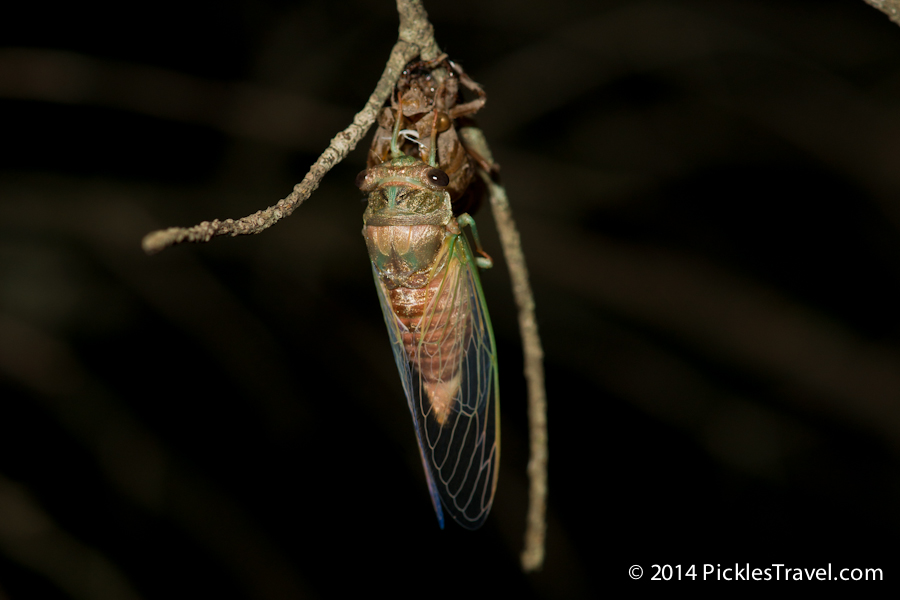
It takes longer for the cicada to ‘dry’ out after molting from the nymph skin than it does from beginning to end of the molting process. They turn from a lovely sea green to a much darker forest green and black color.
Once they have fully ‘dried’ they fly off into the night to begin their summer song.
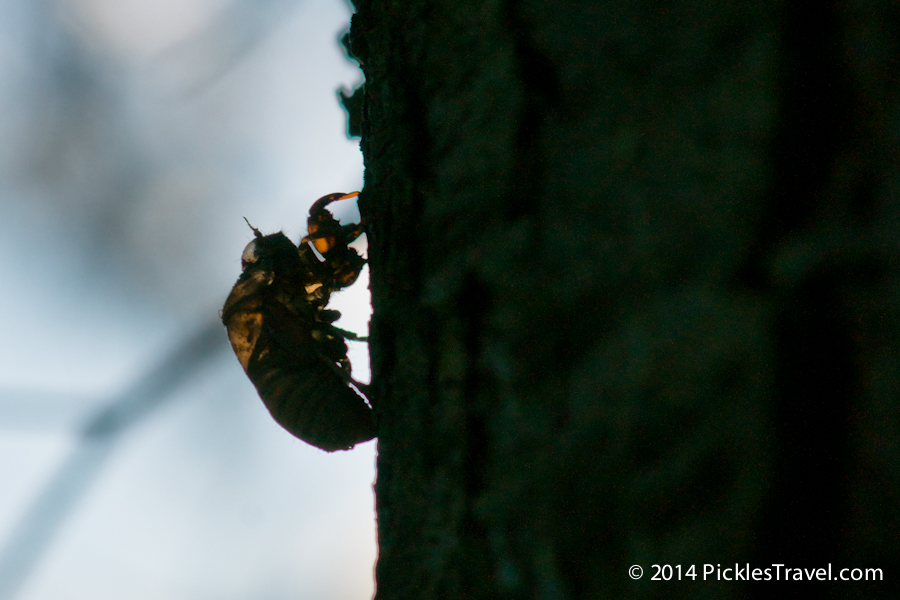 After the Cicada flies off, the prehistoric looking Cicada larval skin is all that remains in the night.
After the Cicada flies off, the prehistoric looking Cicada larval skin is all that remains in the night.
Note: I am not an entomologist, just a lover of insects. Therefore the language here may not be described completely scientifically, I apologize. I would love to be corrected though so let me know your thoughts!